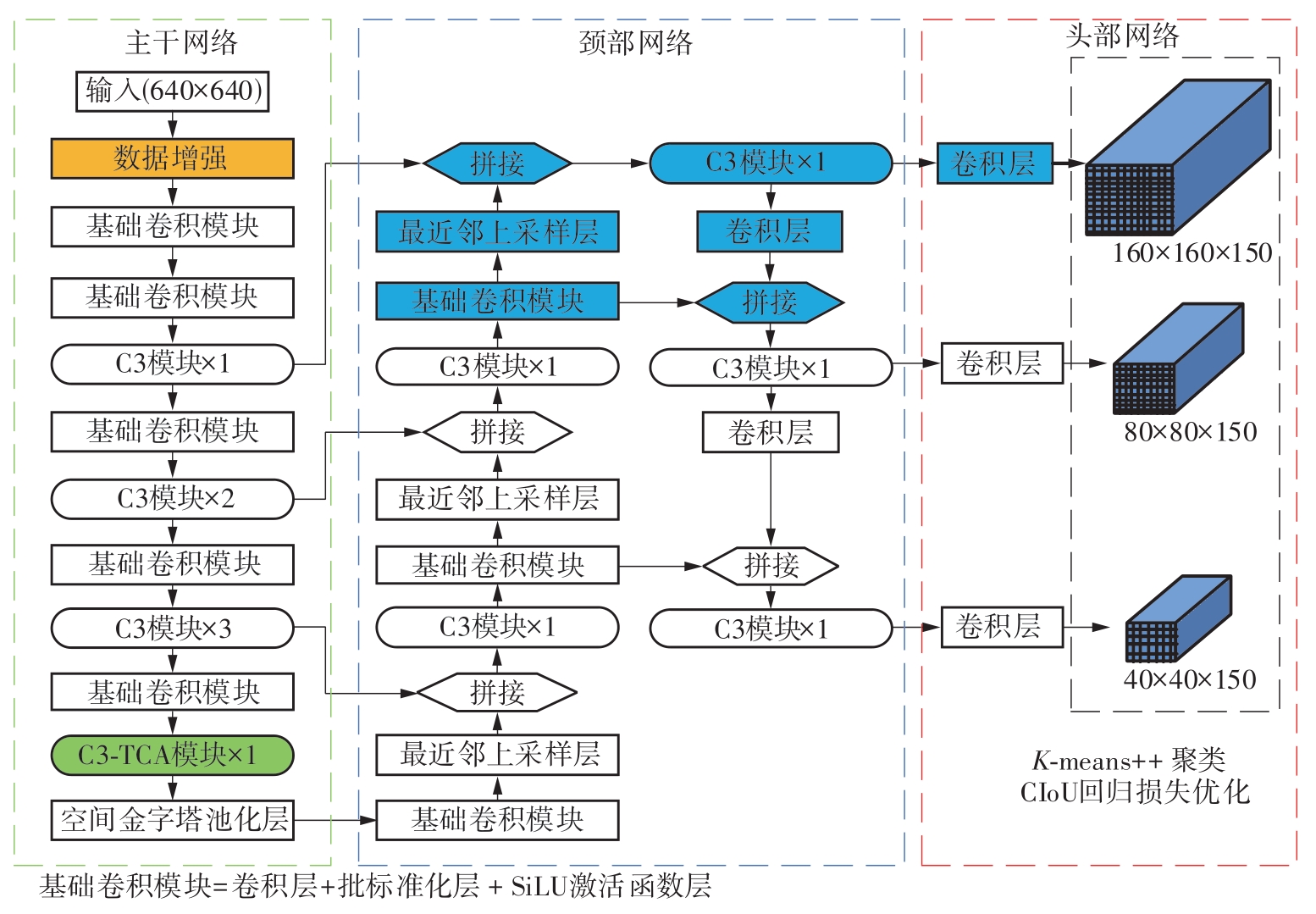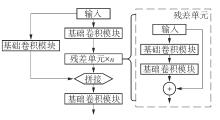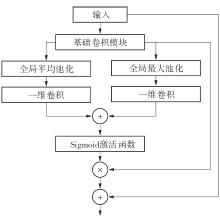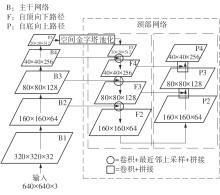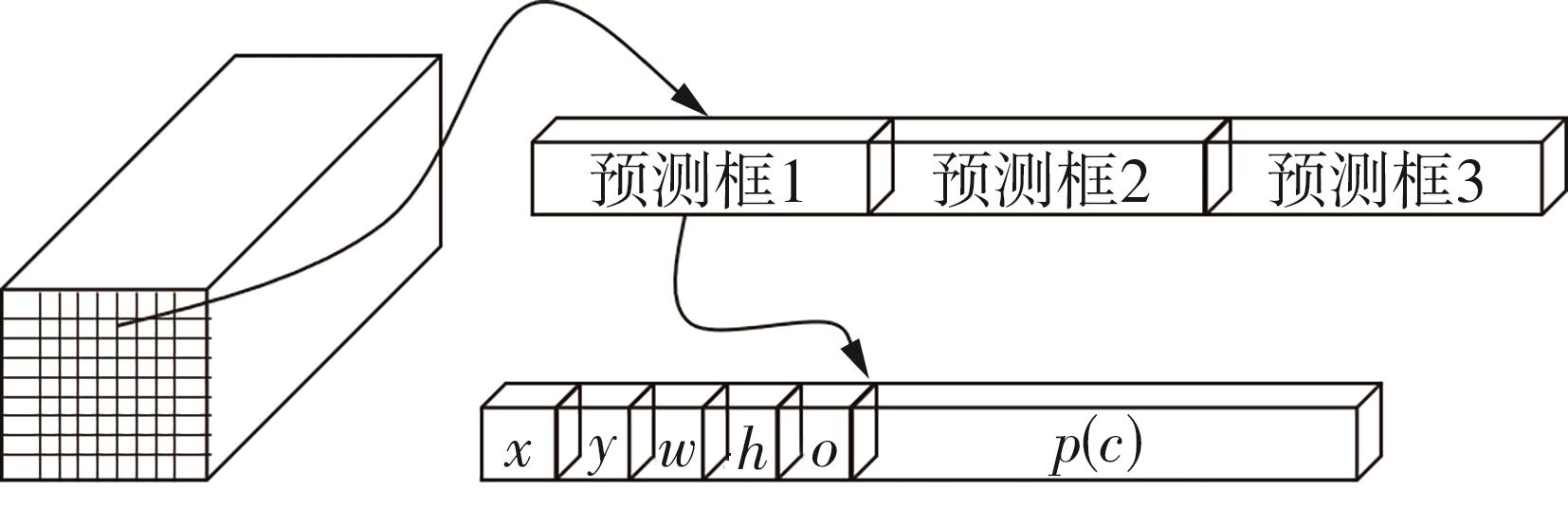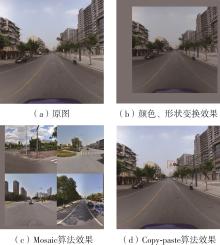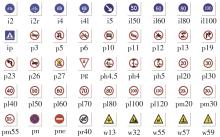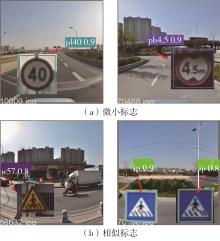Journal of South China University of Technology(Natural Science Edition) ›› 2023, Vol. 51 ›› Issue (12): 64-72.doi: 10.12141/j.issn.1000-565X.220639
Special Issue: 2023年机械工程
• Mechanical Engineering • Previous Articles Next Articles
Traffic Sign Detection Based on Channel Attention and Feature Enhancement
LUO Yutao GAO Qiang
- School of Mechanical and Automotive Engineering/Guangdong Provincial Key Laboratory of Automotive Engineering,South China University of Technology,Guangzhou 510640,Guangdong,China
-
Received:2022-09-30Online:2023-12-25Published:2023-06-20 -
About author:罗玉涛(1972-),男,教授,博士生导师,主要从事无人驾驶和电控技术研究。E-mail: ctytluo@scut.edu.cn -
Supported by:the Special Fund for High-Quality Development of MIIT Manufacturing Industry(R-ZH-023-QT-001-20221009-001)
CLC Number:
Cite this article
LUO Yutao, GAO Qiang. Traffic Sign Detection Based on Channel Attention and Feature Enhancement[J]. Journal of South China University of Technology(Natural Science Edition), 2023, 51(12): 64-72.
share this article
| 1 | GIRSHICK R, DONAHUE J, DARRELL T,et al .Rich feature hierarchies for accurate object detection and semantic segmentation[C]∥Proceedings of the IEEE Conference on Computer Vision and Pattern Recognition. Columbus:IEEE,2014:580-587. |
| 2 | REN S Q, HE K M, GIRSHICK R,et al .Faster R-CNN:towards real-time object detection with region proposal networks[J].IEEE Transactionson on Patern Analysis and Machine Inteligence,2017,39(6):1137-1149. |
| 3 | GIRSHICK R. Fast R-CNN[C]∥Proceedings of the IEEE International Conference on Computer Vision. Santiago:IEEE,2015:1440-1448. |
| 4 | REDMON J, DIVVALA S, GIRSHICK R,et al .You only look once:unified,real-time object detection[C]∥Proceedings of the IEEE Conference on Computer Vision and Pattern Recognition.Las Vegas:IEEE, 2016:779-788. |
| 5 | REDMON J, FARHADI A. Yolov3:an incremental improvement[J].arXiv Preprint arXiv:,2018. |
| 6 | REDMON J, FARHADI A .YOLO9000:better,faster,stronger[C]∥Proceedings of the IEEE Conference on Computer Vision and Pattern Recognition. Honolulu:IEEE,2017:7263-7271. |
| 7 | BOCHKOVSKIY A, WANG C Y, LIAO H Y M .Yolov4:optimal speed and accuracy of object detection[J].arXiv Preprint arXiv:,2020. |
| 8 | GE Z, LIU S, WANG F,et al .Yolox:exceeding yolo series in 2021[J].arXiv Preprint arXiv:,2021. |
| 9 | LIU W, ANGUELOV D, ERHAN D,et al .SSD:single shot multibox detector[C]∥Proceedings of the 14th European Conference on Computer Vision. Amsterdam:Springer,2016:21-37. |
| 10 | 王卜,何扬 .基于改进YOLOv3的交通标志检测[J].四川大学学报(自然科学版),2022,59(1):57-67. |
| WANG Bu, HE Yang .Traffic sign detection based on improved YOLOv3[J].Journal of Sichuan University(Natural Science Edition),2022,59(1):57-67. | |
| 11 | 陈梦涛,余粟 .基于改进YOLOV4模型的交通标志识别研究[J].微电子学与计算机,2022,39(1):17-25. |
| CHEN Mengtao, YU Su .Research on traffic sign recognition based on improved YOLOV4 model[J].Microelectronics & Computer,2022,39(1):17-25. | |
| 12 | HOU Q B, ZHOU D Q, FENG J S .Coordinate attention for efficient mobile network design[C]∥Proceedings of the IEEE/CVF Conference on Computer Vision and Pattern Recognition.[S.l.]:IEEE,2021:13713-13722. |
| 13 | LIU S T, HUANG D, WANG Y H .Learning spatial fusion for single-shot object detection[J].arXiv Preprint arXiv:,2019. |
| 14 | LIU X, JIANG X K, HU H C,et al .Traffic sign recognition algorithm based on improved YOLOv5s[C]∥Proceedings of the International Conference on Control,Automation and Information Sciences.Xi’an:IEEE,2021:980-985. |
| 15 | KINGMA D P, BA J .Adam:a method for stochastic optimization[J].arXiv Preprint arXiv:,2014. |
| 16 | SANDLER M, HOWARD A, ZHU M,et al .Mobilenetv2:inverted residuals and linear bottlenecks[C]∥Proceedings of the IEEE Conference on Computer Vision and Pattern Recognition.Salt Lake City:IEEE,2018:4510-4520. |
| 17 | WANG C Y, LIAO H Y M, WU Y H,et al .CSPNet:a new backbone that can enhance learning capability of CNN[C]∥Proceedings of the IEEE/CVF Conference on Computer Vision and Pattern Recognition.[S.l.]:IEEE,2020:390-391. |
| 18 | 冯润泽,江昆,于伟光,等 .基于两阶段分类算法的中国交通标志牌识别[J].汽车工程,2022,44(3):434-441,448. |
| FENG Runze, JIANG Kun, YU Weiguang,et al .Chinese traffic sign recognition based on two-stage classification algorithm[J].Automotive Engineering,2022,44(3):434- 441,448. | |
| 19 | HE K M, ZHANG X Y, REN S Q,et al .Deep residual learning for image recognition[C]∥Proceedings of the IEEE Conference on Computer Vision and Pattern Recognition.Las Vegas:IEEE,2016:770-778. |
| 20 | LIU S, QI L, QIN H F,et al .Path aggregation network for instance segmentation[C]∥Proceedings of the IEEE Conference on Computer Vision and Pattern Recognition.Salt Lake City:IEEE,2018:8759-8768. |
| 21 | GHIASI G, CUI Y, SRINIVAS A,et al .Simple copy-paste is a strong data augmentation method for instance segmentation[C]∥Proceedings of the IEEE/CVF Conference on Computer Vision and Pattern Recognition.[S.l.]:IEEE,2021:2918-2928. |
| 22 | KRISHNA K, MURTY M N .Genetic K-means algorithm[J].IEEE Transactions on Systems,Man,and Cybernetics,Part B (Cybernetics),1999,29(3):433-439. |
| 23 | ZHENG Z H, WANG P, LIU W,et al .Distance-IoU loss:faster and better learning for bounding box regression[C]∥Proceedings of the AAAI Conference on Artificial Intelligence.New York:AAAI,2020,34(7):12993-13000. |
| 24 | IOFFE S, SZEGEDY C .Batch normalization:accelerating deep network training by reducing internal covariate shift[C]∥Proceedings of International Conference on Machine Learning.Lille:ACM,2015:448-456. |
| 25 | HU J, SHEN L, SUN G .Squeeze-and-excitation networks[C]∥Proceedings of the IEEE Conference on Computer Vision and Pattern Recognition.Salt Lake City:IEEE,2018:7132-7141. |
| 26 | LIN T Y, DOLLÁR P, GIRSHICK R,et al .Feature pyramid networks for object detection[C]∥Proceedings of the IEEE Conference on Computer Vision and Pattern Recognition.Honolulu:IEEE,2017:2117-2125. |
| 27 | ZHANG H, CISSE M, DAUPHIN Y N,et al .Mixup:beyond empirical risk minimization[J].arXiv Preprint arXiv:,2017. |
| 28 | YUN S, HAN D, OH S J,et al .Cutmix:regularization strategy to train strong classifiers with localizable features[C]∥Proceedings of the IEEE/CVF International Conference on Computer Vision.Seoul:IEEE,2019:6023-6032. |
| [1] | MA Xiaoliang, AN Lingling, DENG Congjian, et al. Translation Optimization Technology of Automatic Speech Recognition Based on Industry-Specific Vocabulary [J]. Journal of South China University of Technology(Natural Science Edition), 2023, 51(8): 118-125. |
| [2] | ZHU Zhengyu, LUO Chao, HE Qianhua, et al. Multi-View Lip Motion and Voice Consistency Judgment Based on Lip Reconstruction and Three-Dimensional Coupled CNN [J]. Journal of South China University of Technology(Natural Science Edition), 2023, 51(5): 70-77. |
| [3] | YE Feng, CHEN Biao, LAI Yizong. Contrastive Knowledge Distillation Method Based on Feature Space Embedding [J]. Journal of South China University of Technology(Natural Science Edition), 2023, 51(5): 13-23. |
| [4] | QIU Zhibin, LU Zuwen, WANG Haixiang, et al. Recognition of Bird Sounds Related to Power Grid Faults Based on Mel Spectrogram and Convolutional Neural Network [J]. Journal of South China University of Technology(Natural Science Edition), 2022, 50(2): 129-136. |
| [5] | ZHANG Xiangzhu, ZHANG Lijia, SONG Yifan, et al. Obstacle Avoidance Algorithm for Unmanned Aerial Vehicle Vision Based on Deep Learning [J]. Journal of South China University of Technology (Natural Science Edition), 2022, 50(1): 101-108, 131. |
| [6] | HUANG Min QI Haitao JIANG Chunlin. Coupled Collaborative Filtering Model Based on Attention Mechanism [J]. Journal of South China University of Technology(Natural Science Edition), 2021, 49(7): 59-65. |
| [7] | Qi LIU Bin Yu. Pavement Crack Recognition Algorithm Based on Transposed CNN [J]. Journal of South China University of Technology(Natural Science Edition), 2021, 49(12): 124-132. |
| [8] | LIU Shuowei, LIU Beibei, HU Yongjian, et al. Steganalysis Method with Feature Enhanced by Embedding Probability of Motion Vector [J]. Journal of South China University of Technology (Natural Science Edition), 2021, 49(11): 127-134. |
| [9] | LI Bo RAO Haobo. Salient Object Detection Based on Feature Enhancement in Complex Scene [J]. Journal of South China University of Technology (Natural Science Edition), 2021, 49(11): 135-144. |
| [10] | DU Qiliang, HUANG Liguang, TIAN Lianfang, et al. Recognition of Passengers'Abnormal Behavior on Escalator Based on Video Monitoring [J]. Journal of South China University of Technology (Natural Science Edition), 2020, 48(8): 10-21. |
| [11] | CHEN Shanxiong, HAN Xu, LIN Xiaoyu, et al. MSER and CNN-Based Method for Character Detection in Ancient Yi Books [J]. Journal of South China University of Technology (Natural Science Edition), 2020, 48(6): 123-133. |
| [12] | FAN Zizhu, WANG Song, ZHANG Hong, et al. W-Net-Based Segmentation for Remote Sensing Satellite Image of High Resolution [J]. Journal of South China University of Technology (Natural Science Edition), 2020, 48(12): 114-124. |
| [13] | LIU Jieping, WEN Junwen, LIANG Yaling. Monocular Image Depth Estimation Based on Multi-Scale Attention Oriented Network [J]. Journal of South China University of Technology (Natural Science Edition), 2020, 48(12): 52-62. |
| [14] | LIU Jianguo, FENG Yunjian, JI Guo, et al. Improved Stereo Matching Algorithm Based on PSMNet [J]. Journal of South China University of Technology (Natural Science Edition), 2020, 48(1): 60-69,83. |
| [15] | WANG Weining LI Lemin HUANG Jiexiong LUO Jiebo XU Xiangmin. A Multi-level Deep Convolutional Neural Network for Image Emotion Classification [J]. Journal of South China University of Technology(Natural Science Edition), 2019, 47(6): 39-50. |
| Viewed | ||||||
|
Full text |
|
|||||
|
Abstract |
|
|||||

